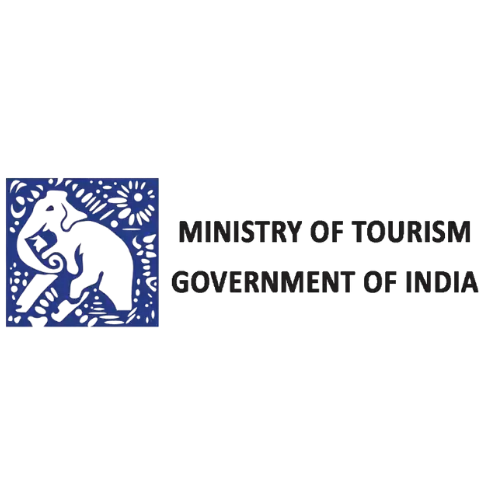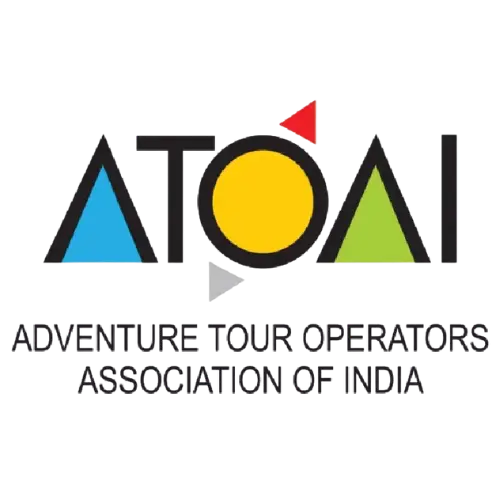Dhaula to Sangla








Rupin Pass Trek – The Ultimate High-Altitude Crossover Adventure in the Indian Himalayas
Imagine walking through ancient pine forests, hearing the rush of icy rivers below your feet, crossing snow-covered bridges, and finally standing on a windswept mountain pass between two distinct worlds. This is the Rupin Pass Trek, a thrilling high-altitude expedition that takes you across the breathtaking landscapes of Uttarakhand into the cold desert valleys of Himachal Pradesh.
At an elevation of 15,279 ft (4,655 m), Rupin Pass is one of the most scenic and dramatic crossover treks in India. It begins in the verdant valleys of Dhaula in Uttarakhand and ends in Sangla in Himachal Pradesh, giving trekkers an unmatched experience of changing terrains, vibrant cultures, and majestic Himalayan vistas. This isn’t just a trek it’s a journey of transformation, one that challenges your endurance, rewards your curiosity, and fills your soul with wonder.
The Magic of a Cross-Cultural Himalayan Trail
One of the most fascinating aspects of the Rupin Pass Trek is how it connects two very different regions Garhwal and Kinnaur not just geographically, but also culturally. The lower sections of the trail pass through quaint Himalayan villages like Jiskun, Sewa, and the iconic hanging village of Jhaka, each steeped in local lore and unique architectural styles. The people here are warm and welcoming, often dressed in traditional woolens and deeply connected to their roots. As you move deeper into the trek and cross the pass into Himachal, everything changes the landscape, the dialect, the religion, even the architecture. It's like walking through a living museum of Himalayan culture, where every bend in the trail tells a new story.
Rupin Waterfalls – The Crown Jewel
No mention of the Rupin Pass Trek is complete without the stunning Rupin Waterfall. As you approach Dhanderas Thatch, the sight of the multi-tiered waterfall dropping down from over 1,500 ft will leave you speechless. It appears like a silver ribbon unfolding from the clouds and crashing into the valley below a natural amphitheater of water, snow, and echoing silence. Trekkers camp right at the foot of this mighty fall, and the next day they cross over snow bridges built by the river itself a true alpine experience. During May and early June, these bridges are thick with snow. In September and October, they start to melt, creating icy gorges and rivulets.
Challenging Yet Rewarding
The 41 km trail of the Rupin Pass is not for the faint of heart. With long hiking hours (6–10 hours a day) and technical snow sections, it requires a decent level of fitness, mental toughness, and proper acclimatization. You’ll gain over 5,000 ft in altitude over just a few days, so it's crucial to pace yourself and hydrate well. That said, for fit trekkers, this challenge is what makes the Rupin Pass so deeply fulfilling. Every summit, every river crossing, every camp setup in the middle of nowhere it all builds into a powerful experience of self-discovery and resilience.
Cultural & Natural Highlights
The trek is a beautiful balance of nature and Himalayan culture. Some of the unique highlights include:
-
Sewa Temple: A centuries-old wooden temple that opens only once in 12 years, dedicated to Lord Shiva. Located at 6,300 ft, it resembles a lighthouse.
-
Hanging Village of Jhaka: A village so steeply perched that its homes seem suspended in mid-air.
-
Saruwas Thatch: A dreamy alpine meadow filled with wildflowers and towering mountains on all sides.
-
Snow Bridges & Ice Gullies: Cross frozen streams and climb vertical snowfields especially in the early season (May–June).
-
Upper Rupin Waterfall Campsite: Camp next to roaring snowmelt streams and dark black rock faces.
When is the Best Time to Trek Rupin Pass?
The Rupin Pass is best done during two windows:
-
Summer (May–June): Expect lots of snow, frozen bridges, and the iconic “snow slide descent” from the pass. Great for snow-lovers and photographers.
- Post-Monsoon (September–mid-October): Crisp weather, vibrant autumn foliage, clear views of mountain peaks. Trails are drier but colder at night.
The Journey of a Lifetime
The Rupin Pass Trek is one of the rarest Indian treks that ticks every box challenge, culture, scenic beauty, and emotional depth. It teaches you patience, resilience, and the power of moving one step at a time through life’s most unpredictable terrains. From forest trails to snow bridges, from sleepy villages to raging waterfalls Rupin Pass doesn’t just change your scenery, it changes you.
Short Itinerary
Day 1: Shimla to Bawta (Drive – 195 km / 8–10 hrs, Altitude: 1,920 m / 6,300 ft)
Day 2: Bawta to Jhaka via Jiskun (Trek – 6–7 km / 4–5 hrs, Altitude: 2,347 m / 7,700 ft)
Day 3: Jhaka to Saruwas Thatch (Trek – 8–9 km / 5–6 hrs, Altitude: 3,292 m / 10,800 ft)
Day 4: Saruwas Thatch to Dhanderas Thatch (Trek – 6–7 km / 4–5 hrs, Altitude: 3,560 m / 11,680 ft)
Day 5: Dhanderas Thatch to Upper Waterfall Camp (Trek – 3–4 km / 3 hrs, Altitude: 4,000 m / 13,120 ft)
Day 6: Upper Waterfall Camp to Ronti Gad via Rupin Pass (Trek – 10–11 km / 8–9 hrs, Altitude: 4,650 m / 15,250 ft → 4,090 m / 13,420 ft)
Day 7: Ronti Gad to Sangla via Sangla Kanda (Trek – 12 km / 5 hrs + Drive – 2–3 hrs, Altitude: 2,682 m / 8,800 ft)
Detailed Itinerary
Day 1: Shimla to Bawta
- Altitude: 1,920 m / 6,300 ft
- Distance: 195 km
- Duration: 8–10 hrs (Drive)
Your journey begins with a long but beautiful drive from Shimla through apple-laden valleys, pine forests, and traditional Himachali towns like Theog, Narkanda, Rohru, and Chirgaon. The road narrows as you approach the remote region of Dodra Kwar. The final stretch toward Bawta is scenic yet rugged, offering the first glimpse of Himalayan isolation. You’ll spend the night in a traditional guesthouse or homestay nestled in this quiet village, acclimatizing to the terrain and altitude.
Day 2: Bawta to Jhaka via Jiskun
- Altitude: 2,347 m / 7,700 ft
- Distance: 6–7 km
- Duration: 4–5 hrs (Trek)
The trek kicks off with a steep climb through thick pine forests leading up to the charming village of Jiskun. After a short break, continue descending gradually and follow the trail that winds across narrow ledges and through wooden bridges to reach the ‘hanging village’ of Jhaka. This scenic hamlet, perched dramatically on a cliff, offers stunning views of the Rupin Valley below. Overnight stay in tents amidst traditional wooden homes and prayer flags fluttering in the breeze.
Day 3: Jhaka to Saruwas Thatch
- Altitude: 3,292 m / 10,800 ft
- Distance: 8–9 km
- Duration: 5–6 hrs (Trek)
Today’s trail descends steeply to the Rupin River, followed by a wooden bridge crossing that brings you into dense rhododendron forests. The ascent continues steadily through cascading waterfalls, moss-covered boulders, and serene meadows. After hours of hiking through varying terrain, you’ll reach Saruwas Thatch – a stunning open alpine meadow carpeted with wildflowers and offering views of snowy ridges. Camp here under a starlit sky with the sound of the river flowing nearby.
Day 4: Saruwas Thatch to Dhanderas Thatch
- Altitude: 3,560 m / 11,680 ft
- Distance: 6–7 km
- Duration: 4–5 hrs (Trek)
The trek from Saruwas to Dhanderas Thatch is like walking through a Himalayan fairytale. The trail opens into expansive meadows surrounded by snow-capped peaks, and you’ll witness cascading waterfalls merging into the valley floor. As you gain altitude gradually, the views become more spectacular. Dhanderas Thatch is one of the most beautiful campsites in the Indian Himalayas, nestled below the iconic Rupin Waterfall, which tumbles down from thousands of feet above.
Day 5: Dhanderas Thatch to Upper Waterfall Camp
- Altitude: 4,000 m / 13,120 ft
- Distance: 3–4 km
- Duration: 3 hrs (Trek)
Today is short but physically challenging as you climb alongside the thundering Rupin Waterfall. The path includes steep rocky sections and snow patches depending on the season. After negotiating narrow ledges and icy ridges, you reach the Upper Waterfall Camp – a secluded alpine setting surrounded by towering cliffs and glaciers. This day also serves as an acclimatization buffer before the big push to the pass. Rest well under clear skies and glacier winds.
Day 6: Upper Waterfall Camp to Ronti Gad via Rupin Pass
- Altitude: 4,650 m / 15,250 ft → 4,090 m / 13,420 ft
- Distance: 10–11 km
- Duration: 8–9 hrs (Trek)
This is the toughest and most rewarding day of the trek. Begin with a steady ascent over steep snowfields and scree slopes. The final stretch to Rupin Pass is a thrilling climb through a narrow gully flanked by snow walls. On reaching the top (4,650 m), you’ll be greeted with 360° views of the Dhauladhar and Kinnaur ranges. After celebrating your summit, begin the long descent over rocky terrain to the meadows of Ronti Gad. This is your last high-altitude campsite — surrounded by silence, peaks, and satisfaction.
Day 7: Ronti Gad to Sangla via Sangla Kanda
- Altitude: 2,682 m / 8,800 ft
- Distance: 12 km (Trek) + 2–3 hrs (Drive)
- Duration: 5 hrs (Trek)
The final day of the trek takes you downhill through lush meadows and pine forests toward the valley floor. Pass through Sangla Kanda — a beautiful grassland dotted with grazing sheep and wooden huts. Eventually, reach the roadhead where a vehicle will pick you up for a short drive to Sangla village. The shift from alpine wilderness to Kinnauri civilization is immediate. Overnight in Sangla or continue your journey onwards. The trek ends, but the memories will last a lifetime.
-1.jpg)
Rupin Pass Trek is not an extremely hard trek, however, you need to prepare yourself physically as well as mentally to achieve the demanding trails of this exotic journey. You will have to cover around 9-10 km and altitude will go high from 5100 ft to a maximum of 15380 ft in a short span of mere 4 days. To make this whole excursion, smooth, joyful, and less tiring, train yourself accordingly.
Cardiovascular stamina:
You need to develop the endurance to run almost 8-10 km in one hour. Stamina doesn’t build in a day. You need to start exercising at least a month prior to the commencement of the trek. Sprint is the best choice to boost your stamina however jogging will help to keep your energy up during the longer paths. Also, if you are just starting to maintain a fitness regime then jogging is the basic workout you should begin. You may add cycling and swimming in your routine to avoid boredom and to make your body more adaptive.
Strength:
Another area to cover in the process of your body development is to train your mind and body to tackle with the roughness of odd and unsteady tracks of mountains. You will have to walk these detours carrying your backpack on your shoulders, which can cause muscle soreness and ache. Strengthening your legs by working out regularly is the only option to prevent it. Squats can make back thigh and lower legs muscles so start doing 2-3 sets of squats regularly with 8-10 repetitions. Walking up and downstairs is another option to add in your daily routine to strengthen your muscles.
Flexibility:
Flexibility is just like an extra topping on the Pizza in your schedule of body training. It does not only relax the muscles but helps you to open your body easily which will lead you to walk at a fast pace and cross even the roughest terrains comfortably. Flexibility can be induced by stretching muscles on a daily basis. This will help you lose extra inches on your body so you will be lighter to embrace this detour of Rupin Pass Trek.
Essential Things to carry for Rupin Pass Trek
- A Backpack:
For this extraordinary trek, your first requirement is a tough and strong backpack. A 50-60 liter bag is sufficient for the journey. The bag should be of waterproof yet light weight-stuff and must have good shoulder and hip support with ample small quick-access pockets.
Tip- Backpack can be bought of any brand like Decathlon, Wildcraft, Woodland, etc.
- Shoes:
Shoes are the next important item for the preparation list of Bali Pass Trek. We need a pair of shoes that are rough from the outer side but soft from inside, to make the journey comfortable and reliable. Good grip, adequate ankle support, water-resistance, and snow handling are the other qualities we should look for in our trekking shoes.
Tip- Decathlon has a good series of trekking shoes you can purchase from there. Eg- Trek series and MH series are good options.
- Clothes:
Trekking can be the best adventure of one’s life, however, it could be a disaster without the right choice of layers for the uncertain weather of the mountains.
- T-Shirt as a Baselayer:
Carry at least 3-5 t-shirts as per the length of the excursion. We prefer you to wear full sleeve collared t-shirts as they help to protect the body from sun harmful rays. If you don’t like to wear full sleeve t-shirt then you may buy sleeve covers, that will help to protect skin from the sun. Dry-fit t-shirts are easy to carry as they tend to be light in weight and they dry quickly as compared to 100% cotton.
- Woolens and Jackets as an Insulation layer:
A padded jacket is appropriate for this trek which can be of non-water resistance material. But an outer padded jacket would serve the purpose of keeping the wind and the cold out. A couple of thin layer sweaters too can be handy in the high cold temperature at the altitude of 15000 ft. We discourage to pack the hand-knitted bulky sweaters.
We don’t prefer down and fur jackets as they are very costly and need maintenance.
- Trek Pants:
2-3 pairs of pants in this trek are suggested for the whole excursion. Pure cotton pants and jeans are to be avoided while shopping for trekking because hard and heavy stuff of these pants will create difficulties during the hill climbing. Cargo and quick-dry trousers top the list for trekking pants, apart from these stretchable pants can serve as thermal bottoms. Pants with zipper pockets prove to be useful to keep the tiny essentials for the way. You should always buy dark colored pants for trekking as they will not get dirty quickly.
Other Mandatory Accessories, Without these Trekking, Seems to be Almost Impossible:
- Caps:
Our head is most vulnerable to heat, whether it is sultry hot or too cold conditions. So, suncap and woolen cap or Balaclava make the next compulsory item on our list. The suncap protects the eyes and head in the sharp direct sunlight, while, woolen caps protect head and ear from the attack of cold wind and snow in the winter seasons during the trekking.
- Glasses:Glasses do not only protect eyes from high-speed wind, but they become a crucial item to carry along to shield eyes from snow blindness (occurs by overexposure in high-frequency sun rays inside the wide snowfield). Only half an hour of exposure of naked eyes can make lead to this severe condition. We recommend buying sunglasses with UV protection for extra protection. In case you wear spectacles, buy oversize glasses which can be worn over them. If you wear contact lens, you don’t need to worry about them, because you can easily change them in your tent if you are habitual and the lens solution doesn’t freeze up there. However, you need to carry enough cleaning solution to clean your fingers and lens.
- Socks:It is best to carry woolen socks along with the regular sports socks. Sports socks provide the stuffiness to the feet in the shoes to walk the longer detours comfortably and woolen socks help to keep the body warm while sleeping. Two layers of sports socks can also work equally well in the dearth of woolen socks. You should always buy synthetic socks or at least mix with synthetic stuff because they dry quickly and do not soak much water as compared to pure cotton socks.
- Headlamp: The handheld torch is often the first choice to carry along in the trek, but a headlamp is more useful. I would help you to keep your hand free in the time of night to handle things like man tents, do dishes and carry other essential things. Do not buy headlamps with a beam light, instead buy a headlamp that covers large areas.
- Trekking Pole:A trekking pole (A Pair ) for hiking is as helpful as a finger held by an infant while learning to walk. The unsteady trails and steeps of the mountains can be arduous to walk but a pole can make your journey pleasant. The usage of a pole, while climbing can almost reduce physical fatigue by 40-50 percent People use only one pole as a normal practice but using two poles makes you walk even faster by supporting body balance.
- Raincover or Rainwear:The weather in the hills is so uncertain that it can rain to floods in some minutes even on a sharp sunny day. So carry a rain cover for this trek. Saving your backpack is also very important because your bag is the only support you can rely on during the whole trek. Some people carry different rain covers for them and their backpack however recommend you to carry a Poncho. It is a large size rain cover which can cover your body along with your backpack till knees. We discourage carrying rain pants, they will hinder your pace by making you walk uncomfortably and also the dry fit pants dry quickly.
- A daypack:A daypack can be used when you can't access your main backpack. Some people tend to offload their backpacks to the porters and for the hiking, you will have to keep the backpack at the campsite. In these scenarios, a 20-30 liters small daypack will help you to carry the essential things for the day.
Other Important Requirements
- Cutlery and Water Bottles:Carrying cutlery is also mandatory on this trek. Carry lightweight steel cutlery(a tumbler or mug, a plate, and a spoon) and avoid having plastic cutlery on your packing list. Plastic things tend to attract more germs and hard to clean. Along with these pack two 1-liter water bottles to keep yourself hydrated for longer hiking. We recommend carrying one of thermos which can help you carry warm water in the cold weather.
- Toilet Kit:You should gather only basic toiletries like toothpaste and toothbrush, a soap, a moisturizer, a toilet roll, a deodorant, a facewash, oil, a paper soap, or sanitizer in your toilet kit. Collect the small size and quantity of all these above-mentioned things to keep it light. Taking a bath every day is not feasible up there so do not load your kit with soap and shampoos.Women can carry sanitary pads or menstrual cups if in case their periods are falling in during the trek date. Always carry 4-5 plastic poly bags to bring back used pads or any other waste generated during the whole journey. Keep in mind not to throw your used items to preserve the environment in the mountains.
- Medical Kit:
- Diamox - To prevent AMS
- Dolo 650 - For Fever
- Avomine - For motion sickness
- Avil 25mg - For allergies
- Combiflam - Pain killer
- Disprin - For headache
- Digene - For acidity
- Norflox TZ & Lomofen - (diarrhea)
- ORS
- Omez/ Rantadine - (antacids)
- Crepe bandage - 3 to 5 meters
- Gauze - 1 small roll
- Band-aids - different sizes
- Cotton - 1 small roll
- Betadine or any antiseptic cream
- Moov/Volini spray (aches, & sprains)
- Knee caps
- Hot water bag in winter if needed
Cancellation Policy & Cost Terms
We understand that plans can change, and we aim to provide flexible options for our trekkers while ensuring fair policies for all. Please read our detailed cancellation, refund, and booking terms before confirming your trek.
How to Request a Cancellation
- Email your cancellation request to info@tripophilia.in using your registered email ID.
- Mention your booking details, trek name, and start date.
Cancellation Charges & Refund Options
1. Cancellations made 25+ days before trek start date
- Refund Options:
- 5% deduction of trek fee.
- 100% cash voucher (valid for any trek for 1 year).
- Option to transfer your booking to a friend (any trek, any date).
2. Cancellations made 15–24 days before trek start date
- Refund Options:
- 30% deduction of trek fee.
- 100% cash voucher (valid for same trek for 1 year).
- 85% cash voucher (valid for any trek for 1 year).
- Option to transfer booking to a friend (same trek, any date).
3. Cancellations made 10–14 days before trek start date
- Refund Options:
- 50% deduction of trek fee.
- 80% cash voucher (valid for same trek for 1 year).
- 70% cash voucher (valid for any trek for 1 year).
- Option to transfer booking to a friend (same trek, any date).
- Book same trek in the same season with any other batch.
4. Cancellations made less than 9 days before trek start date
- Refund Options:
- No cash refund.
- 20% cash voucher (valid for same trek for 1 year).
- 10% cash voucher (valid for any trek for 1 year).
- Option to transfer booking to a friend (same trek, same date).
Special Emergency Cancellation Policy
If you cancel due to:
- Death in immediate family (parents, siblings, spouse, children)
- Hospitalization (minimum 48 hours)
- Fracture (leg/arm) within a week before trek start
Even if cancelled 1 day before trek, you will receive:
- 90% cash refund
- 10% voucher (valid for 1 year, any India trek)
Note: Valid proof is required.
Important Terms & Conditions
- Change of trek batch is subject to seat availability.
- When transferring your trek to a friend, they must meet mandatory eligibility criteria.
- Tripophilia reserves the right to modify/cancel policies without prior notice.
Booking & Payment Terms
- Verify all booking details (dates, documents) at the time of reservation.
- Payment must be made within the given timeline to confirm booking.
- Cash refunds are applicable only for cash payments. Payments via voucher, discount, promo code, or non-cash methods are non-refundable in cash.
- Refunds, if applicable, are processed within 15–30 working days.
Voucher Terms
- Vouchers are non-transferable.
- Cannot be combined with other offers.
- Valid for treks booked directly with Tripophilia in India.
- Use voucher with your registered phone number or email ID.
- All standard trek booking terms apply to vouchers.
Itinerary Modifications
- Tripophilia may modify, shorten, or cancel a trek due to weather, transportation delays, health emergencies, or Force Majeure.
- If Tripophilia cancels before trek start:
- Choose an alternate trek/date.
- Get a credit voucher (valid for 1 year).
- Transfer to another trek (paying any price difference).
- If trek is abandoned after it starts, no cash refund or voucher will be issued.
Force Majeure Clause
Tripophilia will not be held responsible for cancellations or changes due to:
- Natural disasters (earthquakes, landslides, storms, heavy snowfall/rain)
- Strikes, curfews, wars, pandemics, government restrictions
- Road blockages, trail closures, withdrawal of permits
Inclusions
-
Accommodation (as per itinerary)
-
Guesthouse stay on Day 1 & Day 2 (Triple/Quad sharing).
-
Camping during the trek from Day 3 to Day 6.
-
-
Meals (Vegetarian + Egg)
-
Starting from Day 1 Dinner to Day 7 Breakfast.
-
-
Support Team
-
1 Versatile Base Camp Manager – handles communication and emergency manpower deployment.
-
1 Mountaineering & First Aid certified professional trek leader.
-
1 Experienced high-altitude chef.
-
Local, experienced trekking guides (number depending on group size).
-
Adequate support staff for smooth operations.
-
-
Trek Equipment
-
Sleeping bag, sleeping liners (on request), mattress, and utensils.
-
All-season trekking tents (Dual/Triple), kitchen & dining tent, toilet tent.
-
Camping stools, walkie-talkies.
-
Ropes, helmets, ice axe, harness, gaiters, and microspikes (if required).
-
-
First Aid
-
Complete medical kit, stretcher, oxygen cylinder, blood pressure monitor, oximeter, stethoscope.
-
-
Transportation (as per itinerary)
-
- Shimla to Kafnu (day 1).
- Kaza to Manali (Day 8).
( If Booked From Tripophilia as an Add on )
-
-
Permits & Entry Fees – all necessary permits included (for Indian Nationals).
-
Mules/Porters – for carrying central luggage.
-
Trek Insurance – included for Indian Nationals. (Mandatory)
-
Trek Completion Certificate – issued by Tripophilia after successful trek completion.
Exclusions
-
Trek Insurance for Non-Indian Nationals (including NRI or OCI card holders).
-
Food during transit.
-
Any kind of personal expenses.
-
Mule or porter service for personal luggage.
-
Emergency evacuation, hospitalization charges, etc.
-
Additional costs due to itinerary changes caused by natural calamities, roadblocks, vehicle breakdowns, or factors beyond control.
-
Anything not mentioned in the "Inclusions" section.
How to Reach the Starting Point for Rupin Pass Trek
The Rupin Pass trek with Tripophilia begins from the picturesque village of Bawta near Shimla, Himachal Pradesh. All participants must report by 5:30 AM at Shimla Old Bus Stand on Day 1. If you’ve opted for Tripophilia’s transportation add-on, we will handle all arrangements from Shimla to Bawta (start point) and the return journey from Sangla.
Below are the recommended travel options to reach Shimla in time.
1. By Bus (Most Recommended)
Shimla is well connected by road to major North Indian cities.
-
Chandigarh to Shimla: 120 km (approximately 4 hours)
-
Delhi to Shimla: 350 km (approximately 9 to 10 hours)
Taking an overnight HRTC (government) bus from Chandigarh or Delhi is the most reliable and cost-effective option. Government buses tend to be more punctual compared to private operators. Ensure your bus reaches Shimla by or before 5:30 AM on Day 1 of the trek.
We strongly advise against taking private buses from outside the terminals, as they are often delayed.
2. By Train (via Kalka)
You can take a train to Kalka Railway Station, which is the nearest major railhead to Shimla. Kalka is connected to Delhi and Kolkata via direct trains.
From Kalka, you have two options to reach Shimla:
-
Hire a shared or private taxi (takes around 3 to 4 hours)
-
Take the scenic Kalka–Shimla Toy Train (takes 5 to 6 hours)
If you choose the toy train, make sure to reach Kalka one day before the trek, as the journey is slower and requires buffer time.
3. By Air
The nearest airport is Jubbarhatti Airport, located about 22 km from Shimla. Flights to Shimla are limited and often delayed due to weather conditions. If flying, we strongly recommend arriving at least a day before the trek to avoid any last-minute disruptions.
You can also fly to Chandigarh or Delhi and take a bus or taxi to Shimla from there.
Tripophilia Pickup and Drop Details
If you book the transport add-on with Tripophilia:
-
Pickup will be arranged from Shimla Old Bus Stand at 5:30 AM on Day 1
-
After completion of the trek, we will drop you back at the Shimla Old Bus Stand between 11:00 PM and 1:00 AM on the final day
We use comfortable vehicles such as Tempo Travellers or Boleros for all internal transfers during the trek. For custom pickup upgrades or private cab options, please connect with your assigned Tripophilia trek coordinator.
Important Travel Advice
-
It is best to arrive in Shimla a day in advance to ensure a relaxed start to the trek.
-
Keep a buffer day after the trek in your itinerary to avoid missing onward travel in case of delays.
-
For those who prefer to travel independently to the trek starting point, our team will assist you with bus or taxi booking support.
Make sure to book your transport add-on at least 10 days before your trek date to ensure smooth coordination.
Tripophilia ensures end-to-end assistance from your arrival in Shimla to your return, so you can focus on the experience, not the logistics.
Here is what trekkers have to say about their experience at Rupin Pass Trek
Available dates
Click on available dates to Register
- What the colours mean
- Available:Registration is on.
- Full:Indicates the group is full. No further slots are likely. A full group has 18 members.
Dates not suiting you? Click here to customize your trip.






